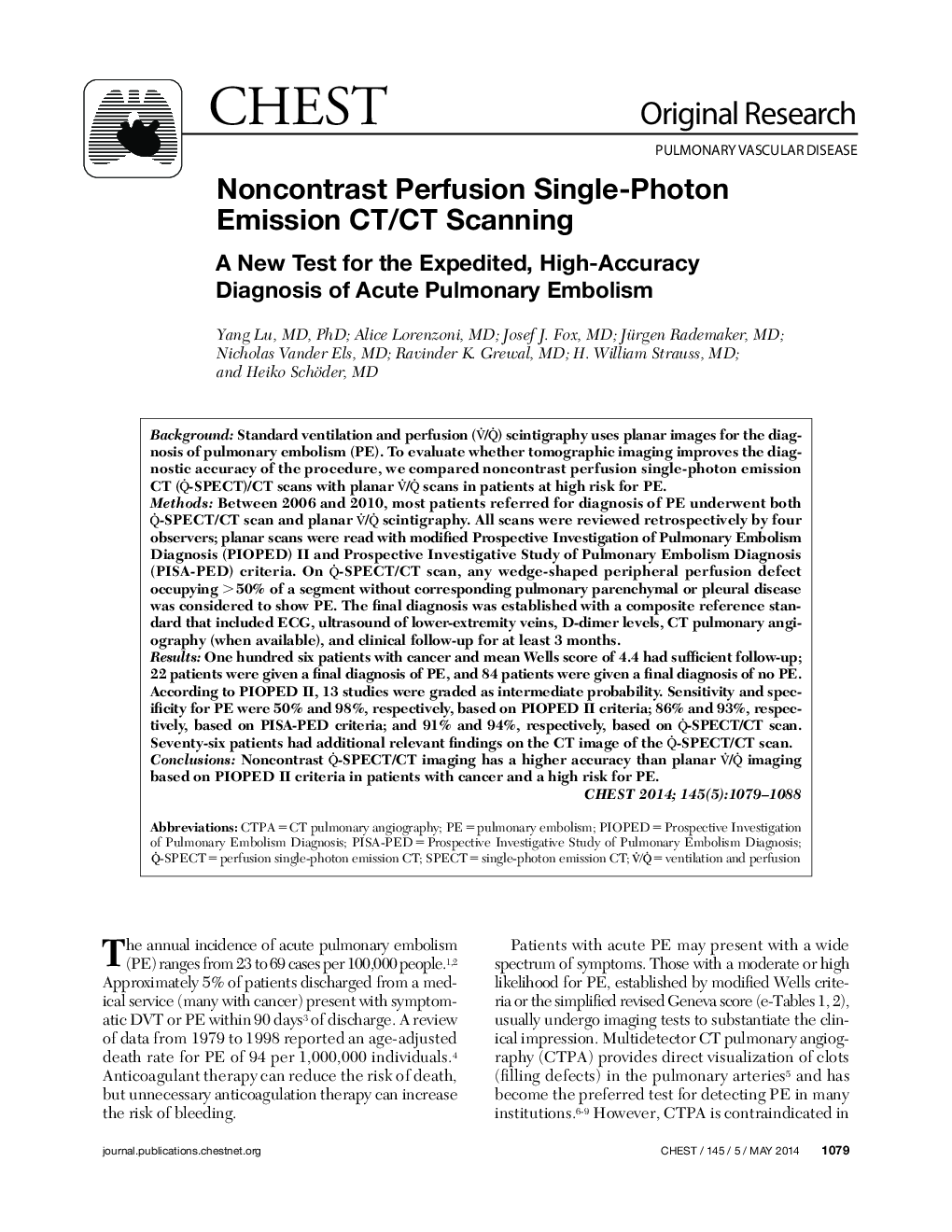| کد مقاله | کد نشریه | سال انتشار | مقاله انگلیسی | نسخه تمام متن |
|---|---|---|---|---|
| 2900357 | 1173329 | 2014 | 10 صفحه PDF | دانلود رایگان |

BackgroundStandard ventilation and perfusion ( V˙/Q˙) scintigraphy uses planar images for the diagnosis of pulmonary embolism (PE). To evaluate whether tomographic imaging improves the diagnostic accuracy of the procedure, we compared noncontrast perfusion single-photon emission CT ( Q˙-SPECT)/CT scans with planar V˙/Q˙scans in patients at high risk for PE.MethodsBetween 2006 and 2010, most patients referred for diagnosis of PE underwent both Q˙-SPECT/CT scan and planar V˙/Q˙scintigraphy. All scans were reviewed retrospectively by four observers; planar scans were read with modified Prospective Investigation of Pulmonary Embolism Diagnosis (PIOPED) II and Prospective Investigative Study of Pulmonary Embolism Diagnosis (PISA-PED) criteria. On Q˙-SPECT/CT scan, any wedge-shaped peripheral perfusion defect occupying > 50% of a segment without corresponding pulmonary parenchymal or pleural disease was considered to show PE. The final diagnosis was established with a composite reference standard that included ECG, ultrasound of lower-extremity veins, D-dimer levels, CT pulmonary angiography (when available), and clinical follow-up for at least 3 months.ResultsOne hundred six patients with cancer and mean Wells score of 4.4 had sufficient follow-up; 22 patients were given a final diagnosis of PE, and 84 patients were given a final diagnosis of no PE. According to PIOPED II, 13 studies were graded as intermediate probability. Sensitivity and specificity for PE were 50% and 98%, respectively, based on PIOPED II criteria; 86% and 93%, respectively, based on PISA-PED criteria; and 91% and 94%, respectively, based on Q˙-SPECT/CT scan. Seventy-six patients had additional relevant findings on the CT image of the Q˙-SPECT/CT scan.ConclusionsNoncontrast Q˙-SPECT/CT imaging has a higher accuracy than planar V˙/Q˙imaging based on PIOPED II criteria in patients with cancer and a high risk for PE.
Journal: Chest - Volume 145, Issue 5, May 2014, Pages 1079–1088